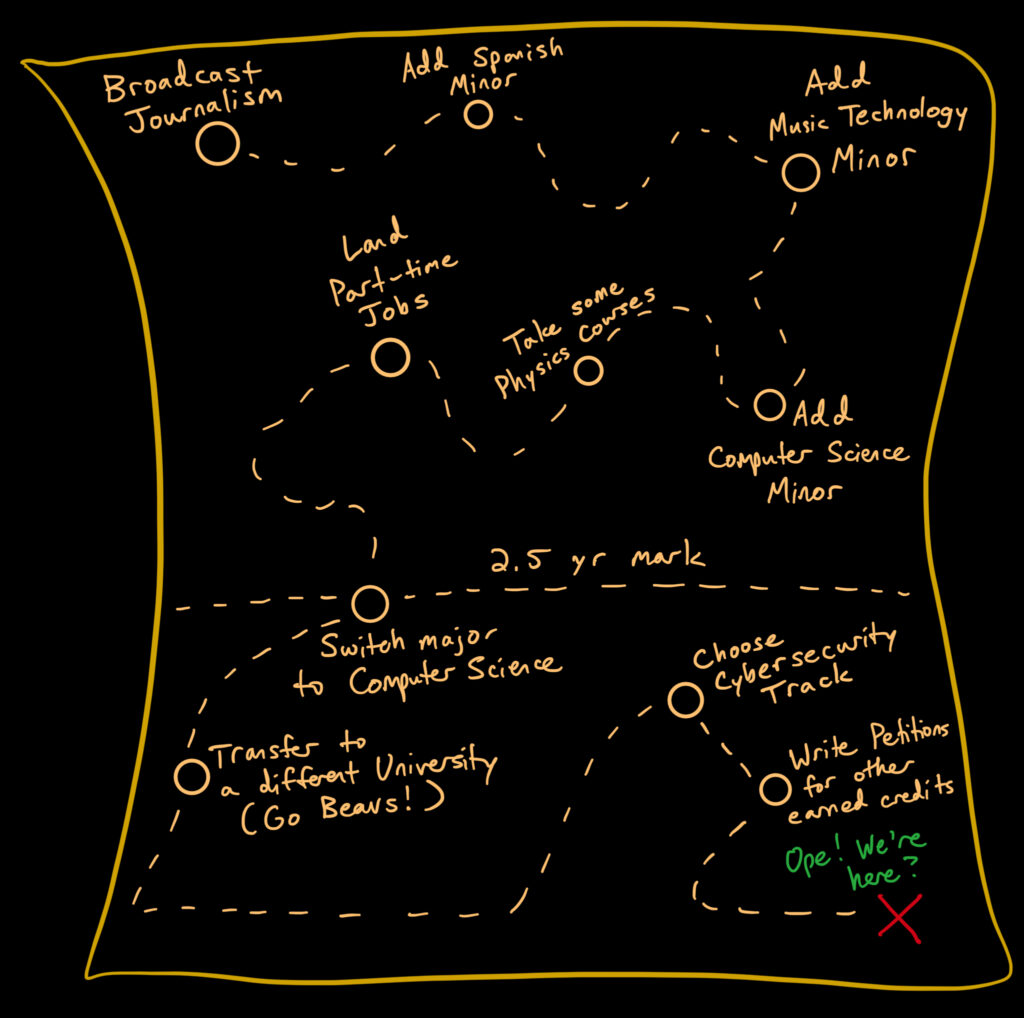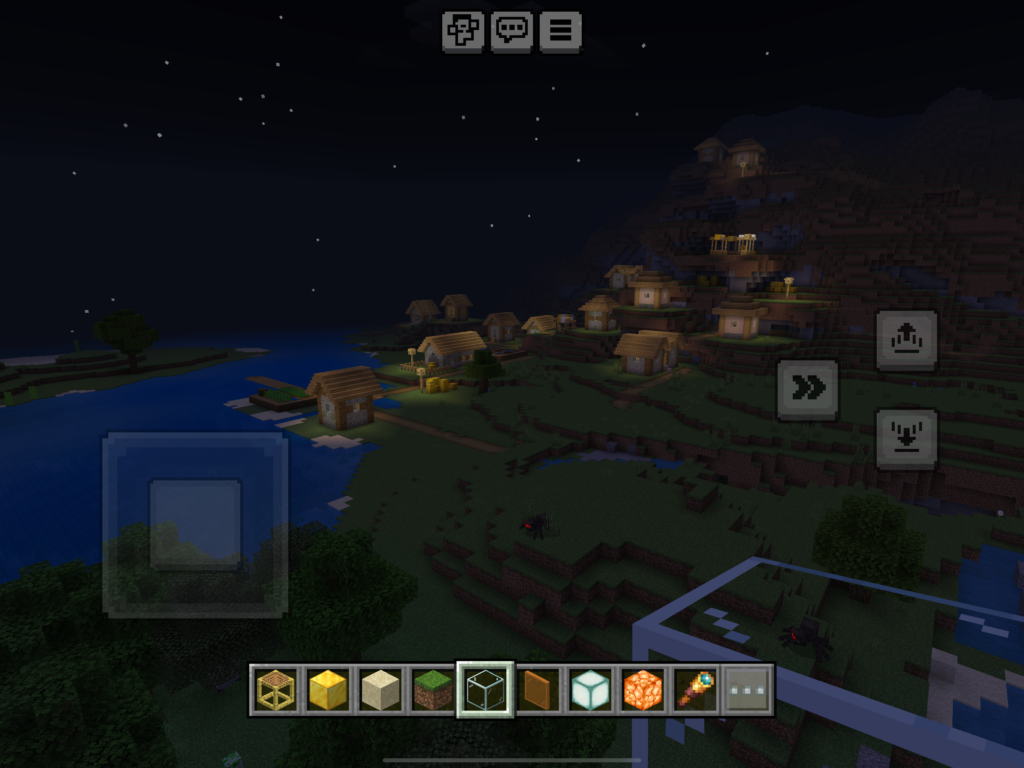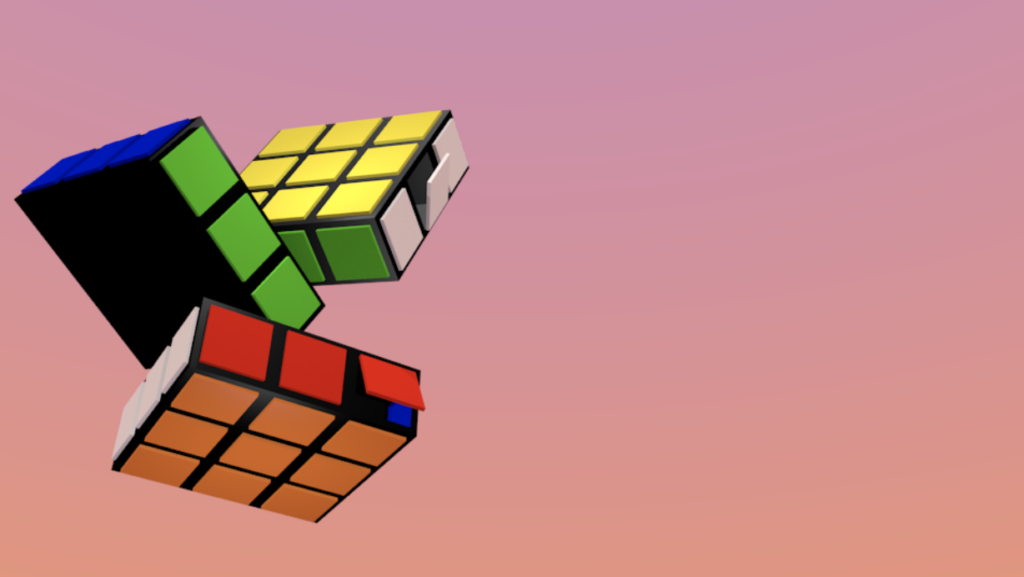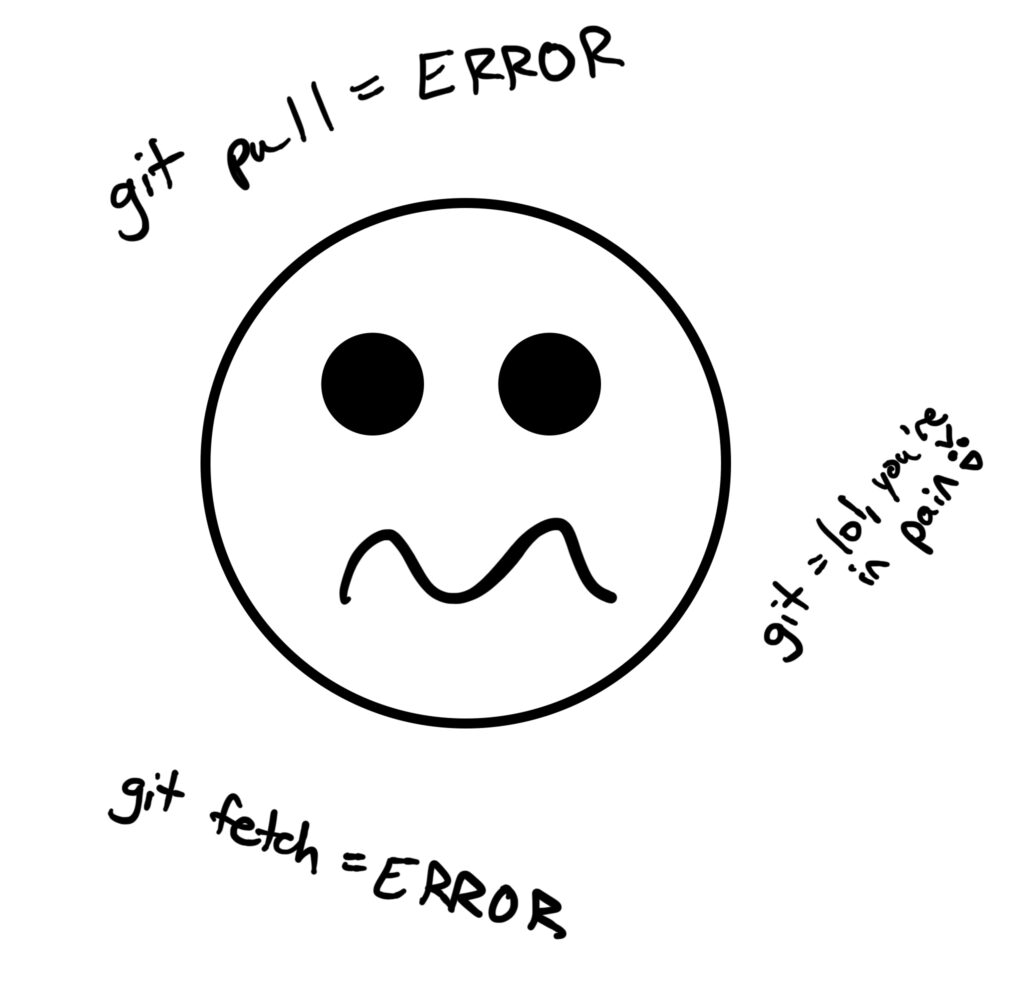
On a cold and bitter February afternoon, a computer programmer’s worst nightmare ensued: all git commands stopped functioning.
I unleashed my best freak-out face: >:0
Time was running out while I tried to figure out how to fix it. For my senior capstone, my teammates and I are creating a web-based game using Phaser 3’s framework to create an educational experience on how to fight wildfires. But I needed to push last-minute updates to the game’s codebase. And Git was not cooperating.
At the time, I used WebStorm, a Javascript and Typescript IDE, to edit the code, which comes with a lot of bells and whistles, including built-in Git functionality. But one day, these tools stopped working. So I switched to using the built-in terminal, but no matter how many branches or clones I made, I was blocked at every turn.
An Unpopular Opinion to Navigate
To make matters worse, GitHub and I have a horrible relationship. It’s embarrassing! I avoided learning git commands for years. Ever since my first computer science course, everyone always told me how amazing using GitHub was, whether they were decades-long professionals or first-year college students. What a bunch of bologna!
Eh. The user interface on GitHub’s website was difficult for me to navigate, and for the longest time, I didn’t realize that manually downloading and uploading updated code to GitHub wasn’t ‘normal.’ Or at least, not the best way to use it. And I didn’t understand what the terminology meant. It felt I was being told to ‘branch’ and ‘fork’ when I didn’t want to. Magic forks are weird! And magic branches feel like ‘Alice in Wonderland,’ and that story always made me feel uncomfortable (the cat freaked me out, and I’m a huge cat person, so that was disturbing). Worse, I didn’t understand what happened after calling those commands in the terminal.
But there’s no way I’m the only computer programmer in the world experiencing these issues!
This is why I want to show you what I appreciate about GitHub now, and a new technology I’m using that helped me understand GitHub at a deeper level, and makes navigating the steps more fun.
The Basic Commands
Based on my understanding thus far, which is very limited, this is the most simple workflow to use when making changes to a GitHub repository.
git clone # make a copy of the repository
git branch # create a new place to store a copy
git checkout # enter that copy
git pull origin main # merge latest code to branch
…make code edits…
git add –all # put changes in a queue (staging)
git commit -m “what you changed” # attach a message to changes
git push origin # upload code changes to main
These are commands that have helped me the most in navigating the crazy web of Git. But given that it’s easy to make mistakes and get lost, GitHub’s documentation is a good starting place, and more understandable after already learning the commands I talked about above.
What I appreciate now about GitHub is that once you understand how a few different steps work, I feel like I’m more in control with how to update different versions of code. I guess since it’s ‘version control,’ that’s appropriate.
But it did take me a while to get to that point. And although using tools with bells and whistles is convenient, sometimes they obfuscate the process. So when something breaks, it’s really hard to know what went wrong. More confusion leads to more frustration, and it can surprisingly waste a lot of time.
I ended up finding a technology that technically still has downloadable bells and whistles, but they do make managing versions not only easier to understand, but demonstrate the process, and make it clear which steps need to occur in order. Surprisingly, it was with a very common free IDE.
I’ll explain.
A Visual Solution
I downloaded Visual Studio Code and downloaded the following extensions:
- GitHub Pull Requests by GitHub
Why? To review and manage GitHub Pull Requests! This is very useful when working on a team repository. - GitHub Repositories by GitHub
Why? To quickly browse, search, edit, and commit to any remote GitHub repository from inside the IDE! - Azure Repose By Microsoft
Why? To open and browse repos quickly from any version. Cloning without this can result in working with out-of-date code, especially if the main repository is regularly updated often. - Remote Repositories by Microsoft
Why? This one integrates with the GitHub Repositories and Azure Repos extensions. Disabling this extension makes all these extensions (except GitHub Pull Requests) inactive, so I believe it’s to tie them together.
Let’s explore how all these extensions function together. First, I clicked on the Remote Explorer button that looks like a desktop icon in the IDE. Then I clicked the + sign to add a new remote repository.
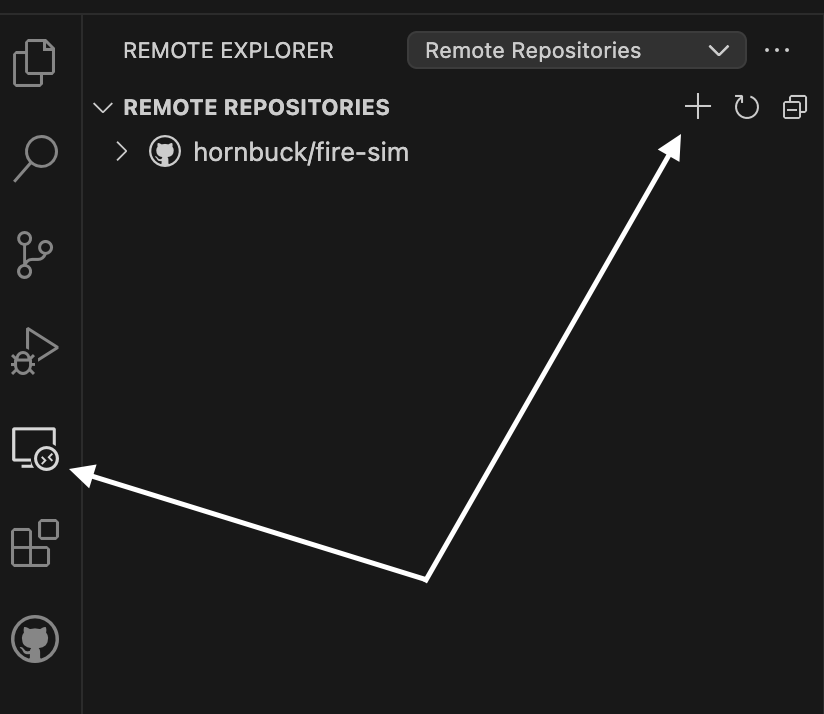
Which opened up a beautiful window at the top of the window that let me sign into GitHub and open a repository! My team’s is named fire-sim.
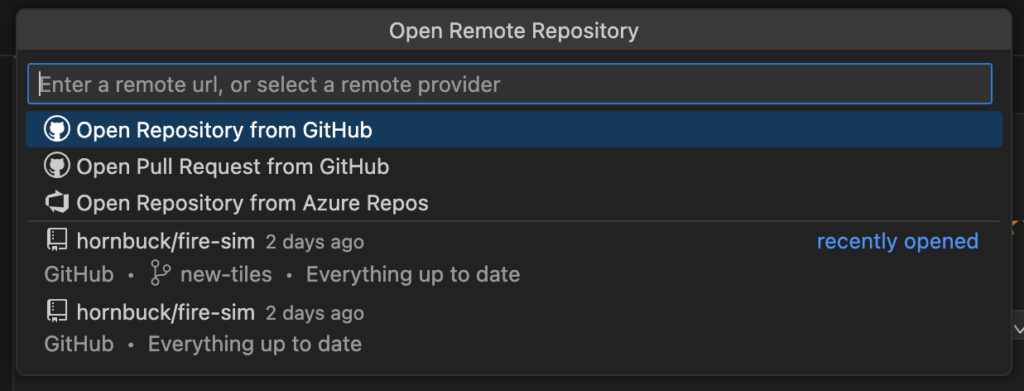
Notice that there are options to open pull requests too! These are extremely helpful to look at all the revisions. In my opinion, it feels clunky to use GitHub’s default UI.
Here is an example of what editing a pull request might look like with these extensions in Visual Studio Code. Note the extra ‘pull request icon’ at the bottom of the left sidebar, and how easy it is to see the old code vs. the new changes being requested to merge into main:
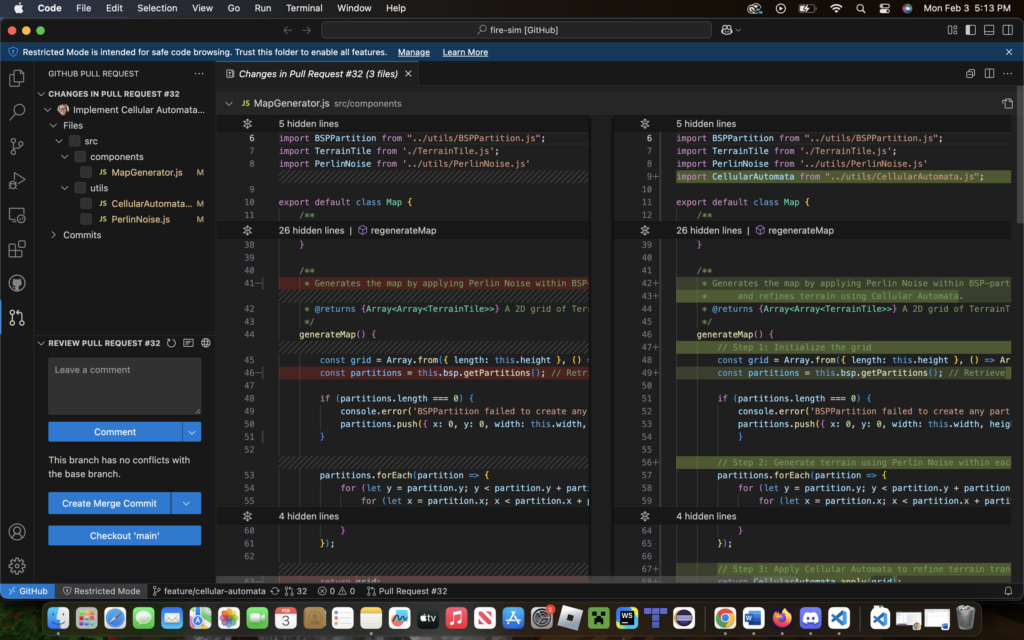
But that’s a side point. The biggest feature I want to demonstrate is how to make a new branch after adding a remote repository.
So, when you first open a repository, the codebase opens up. However, in order to make changes on a new branch and make a pull request later, an extra step is required.
I clicked on the ‘bug’ icon on the left side of the sidebar. This is normally the ‘Run and Debug’ button. Then, I clicked Continue Working On….
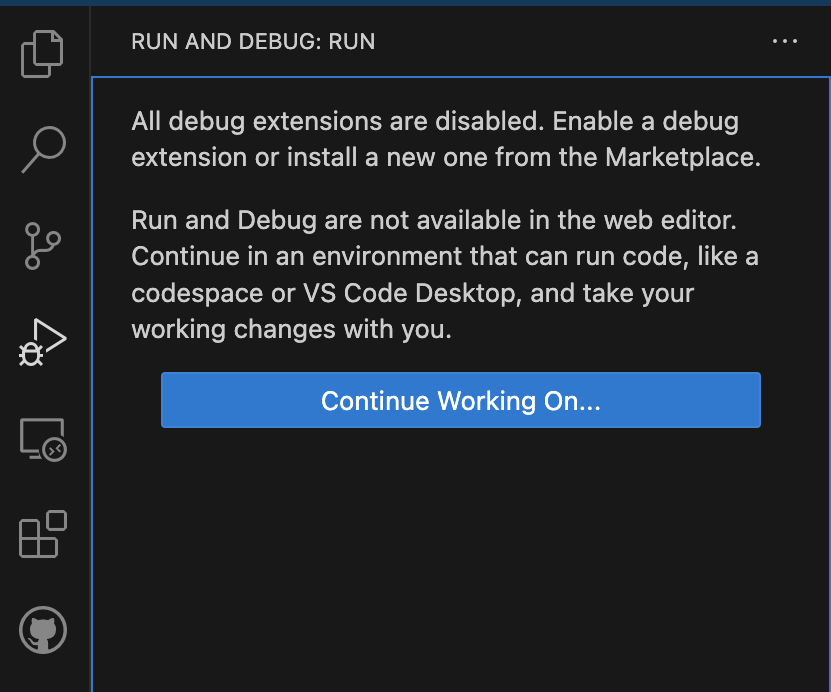
This allowed me to choose a new option that says, “Clone Repository Locally and Open on Desktop.” I get to choose a folder to save the code copy in. This opens up an entire new window, and when I open the terminal, I’m already navigated to the copy.
And this is the time to run all the code commands I wish! To add a new branch, I run the following commands:

Now in my IDE, I can make code changes in this beautiful setup.
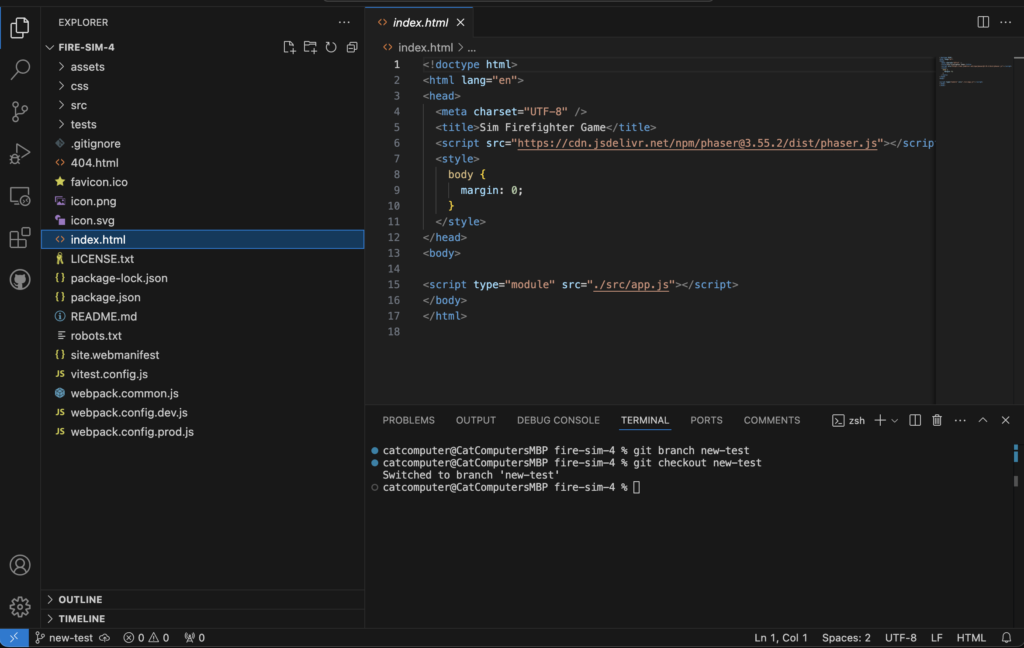
After saving changes to each code file (eg. Ctrl+S or CMD+S), the IDE automatically detects changes and notifies you to make a commit via the Source Control button!
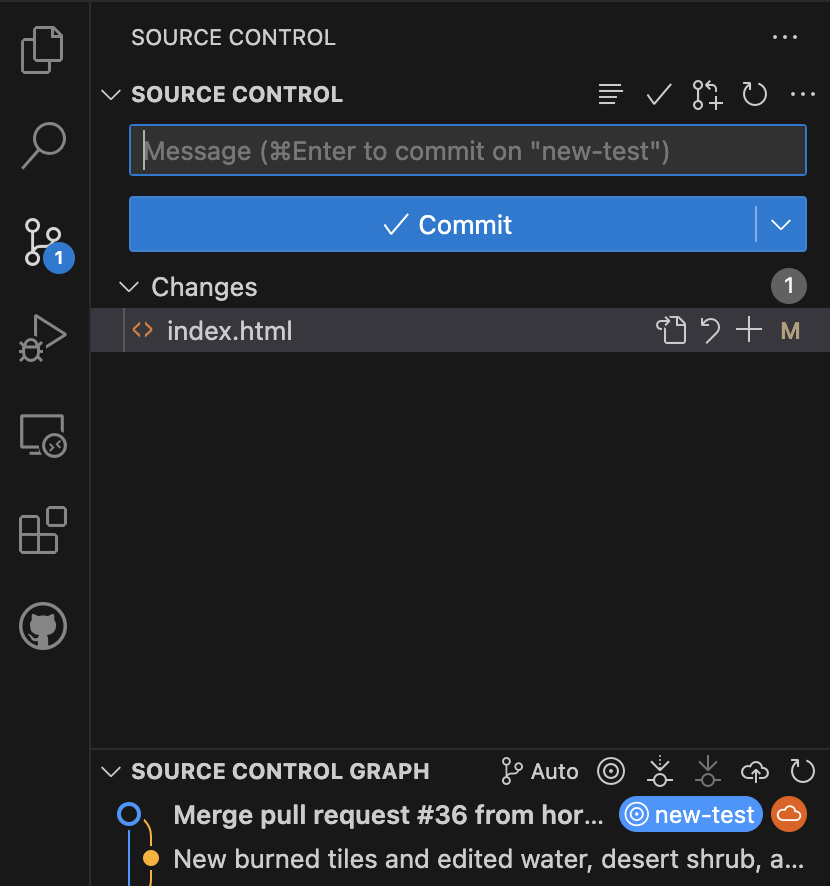
A new file opens that lets me write a comment, and then once I save (eg. Ctrl+S or CMD+S), and exit that file, I can push the code.
I can also make a commit and push the code through the terminal if I don’t like the GUI version. This kind of freedom is exactly what I was looking for, and might be the key to saving my love-hate relationship with GitHub.
I hope this article helps any other programmers enjoy version control a little more too!









